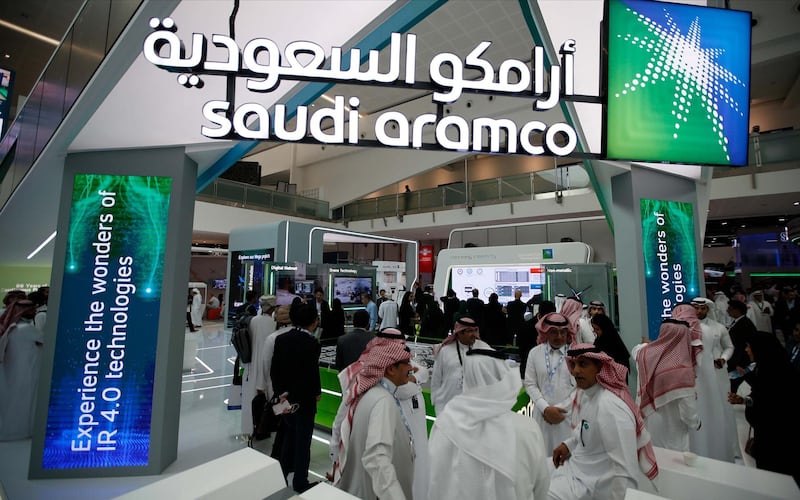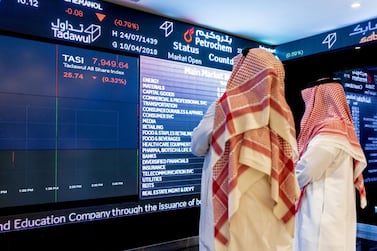Saudi Aramco will pay a second-quarter dividend of $18.75 billion (Dh68.87bn) despite a 73.4 per cent fall in net profit due to lower oil prices and declining refining and chemicals margins during the coronavirus crisis.
The payout, which is scheduled for August 31, is more than the $13.4bn paid during the same period last year.
“Strong headwinds from reduced demand and lower oil prices are reflected in our second-quarter results,” Aramco president and chief executive Amin Nasser said.
“Yet, we delivered solid earnings because of our low production costs, unique scale, agile workforce and unrivalled financial and operational strength. This helped us deliver on our plan to maintain a second-quarter dividend.”
Net profit for the second quarter dropped to 24.62bn Saudi riyals (Dh24bn) from the year-earlier period, as the Covid-19 pandemic tipped the global economy into its deepest recession since the Great Depression, the company said in a regulatory filing on Sunday to the Tadawul exchange where its shares trade.
Analysts had expected a net profit of 31.3bn riyals in the second quarter, according to the mean estimate from three analysts, provided by Refinitiv. Net income for the first half of 2020 fell to 87.10bn riyals, compared to 175.87bn in the first six months of last year.
Aramco's share price rose 0.3 per cent to 33.05 riyals following the results, giving the company a market capitalisation of 119.79bn riyals.
Saudi Aramco is expected to maintain “sustainable” payments to its investors as revenue picks up in the coming quarters, said Vijay Valecha, chief investment officer at Century Financial in Dubai.
“Revenue is expected to gradually recover in the coming quarters, so it will alleviate the stress on dividends in the near term,” he said.
Aramco’s total sales dropped by 57 per cent to 123.23bn riyals during the second quarter.
The company reported a 70.3 per cent year-on-year decline in free cash flow to $6.1bn during the same period.
Capital expenditure for the second quarter stood at $6.2bn and $13.6bn for the first half.
The company said this year’s expenditure is expected to be at “the lower end” of the $25bn to $30bn range, as it optimises capital and efficiency.
Mr Valecha said he believes Aramco’s profitability will not recover until the first half of 2021.
“The worst of oil market seems to be behind us, with Asian crude demand almost reaching pre-coronavirus levels,” he said.
“Nevertheless, oil inventories remain elevated and there is a good possibility that prices will remain depressed for the remainder of the year.”
Aramco is looking to diversify its portfolio at a time of increased uncertainty in the energy industry, which is undergoing a large-scale transition.
The state oil company is looking at strategic asset acquisitions, particularly a $15bn stake in Indian refiner Reliance.
Aramco’s total production reached 12.7 million barrels per day of oil equivalent in the second quarter, as the company raised its output in April after the collapse of Opec+ talks.
Saudi Arabia has since reduced output in line with a historic pact to cut 9.7 million bpd of output.
The alliance is now lowering the cuts and drawing back 7.7 million bpd of production from the markets.
Aramco continues to expand its gas business to meet local and international demand, with its Fadhili Gas Plant reaching full output capacity of 2.5 billion cubic feet per day in the second quarter.
Saudi Aramco also continues to pursue its downstream strategy amid plans to increase its global refining capacity from 4.9 million bpd to between 8 million bpd and 10 million bpd by 2030. Around 2 million bpd to 3 million bpd of output will be converted into petrochemical products.
Last week, Sabic, the region’s biggest petrochemicals company, reported its third consecutive quarterly loss on the back of lower product prices and impairment provisions on certain assets.
Aramco acquired a 70 per cent stake in Sabic worth $69.1bn from the Public Investment Fund, the kingdom's sovereign wealth fund, in June.
Sabic registered a net loss of 2.22bn Saudi riyals during the second quarter, compared with a profit of 2bn riyals for the same period last year.








